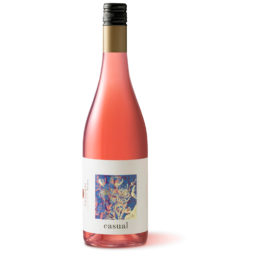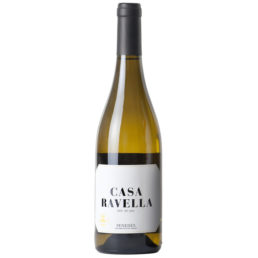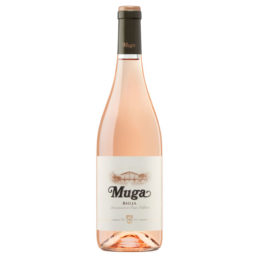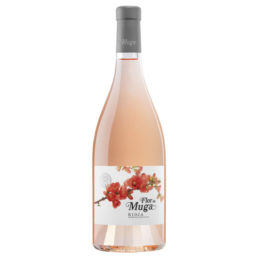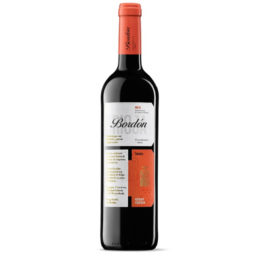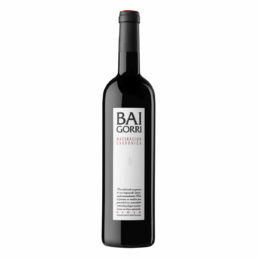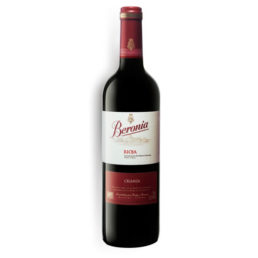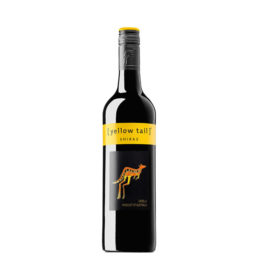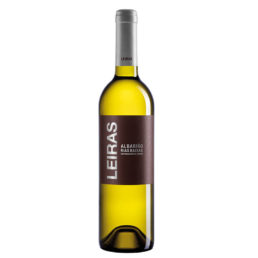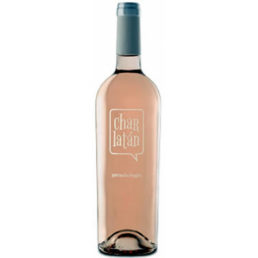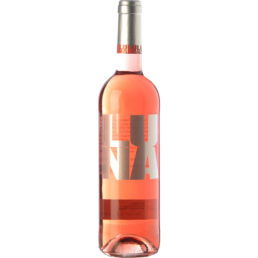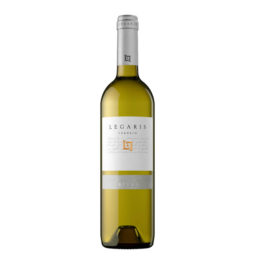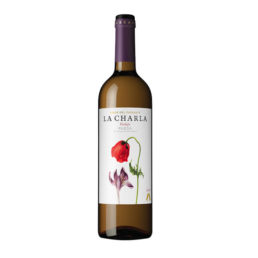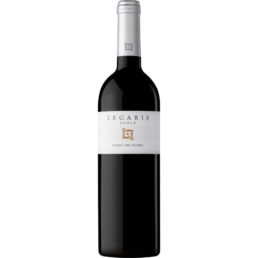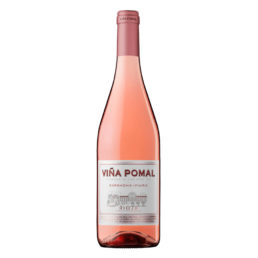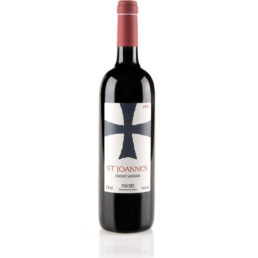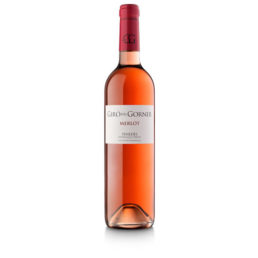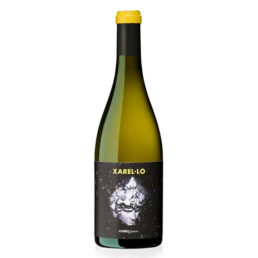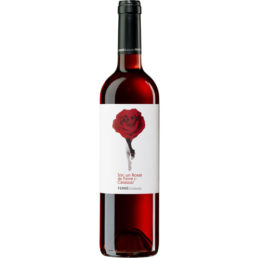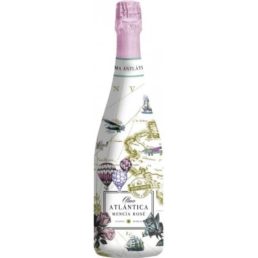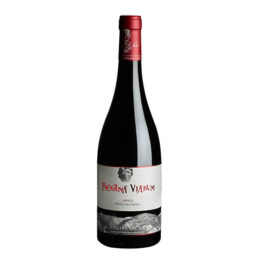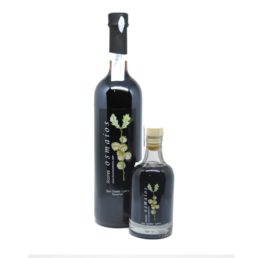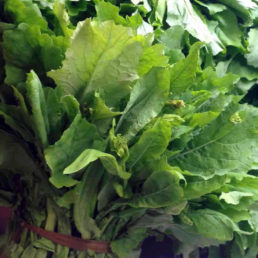Vineyards
Made with Tempranillo and Grenache vineyards from the 3 sub-zones of Rioja with different types of soils: Rioja Alta, Rioja Alavesa and Rioja Eastern slopes of the Sierra de la demanda, with north facing.
folders
Showing all 20 results
-
Rosé wine Tandem – Casual
Casual Of casualis in Latin, accidentally, luckily. Winemaking Once destemmed, the grapes macerated for seven hours in a stainless steel tank. Sangramos the must yolk, which ferments slowly at a temperature of 16 ºC -
White wine Young White House Ravella (ecological)
SOURCE Alt Penedès. Penedès denomination of Origin. Own vineyards of our farms Montargull and The Doghouse (St. Sebastià dels Gorgs) and Home Ravella ('ordal). DEVELOPMENT Only crops own. Manual harvest with selection of the grapes in own vineyard. To obtain the “mosto flor” in pneumatic press. The clarification of the wort has been carried out using a decanting static. The fermentation is carried out by controlling the temperature, in stainless steel tanks. -
Rosé wine Muga
Ring, Prado Enea and Torre Muga are among the best red wines of this country. Less well-known to the public is the excellent work carried out by the family Muga to when you develop your pink, one of the best that can be found in the D. O. Ca. Rioja: Flower of Muga Rosé 2017, mainly produced with grapes of garnacha. While the bodega Muga used for the red wines the garnachas grown in the foothills of the montes Obarenes, with a good ripening of the fruits by exposure to the sun, for the pink use bunches of garnacha from the hillside opposite, where a lower stroke allows for better freshness and preserve the fruit notes tangy and fresh, features of this Muga Rosado. The wine was fermented in small tanks made of wood and remained four months growing up with the fine lees and expanding its virtues. Elaboration After 12 hours of maceration, the wine ferments for 15-20 days in small containers of wood between 16- 18ºC. During 3 months maintain and work the fine sediments that magnify and enhance their virtues and organoleptic. Later we stabilized and cold filtered and bottled. Pairing with tartar of fish, ceviches, salads, folders, rice... -
Wine Flower of Muga Rosé
Ring, Prado Enea and Torre Muga are among the best red wines of this country. Less well-known to the public is the excellent work carried out by the family Muga to when you develop your pink, one of the best that can be found in the D. O. Ca. Rioja: Flower of Muga Rosé 2017, mainly produced with grapes of garnacha. While the bodega Muga used for the red wines the garnachas grown in the foothills of the montes Obarenes, with a good ripening of the fruits by exposure to the sun, for the pink use bunches of garnacha from the hillside opposite, where a lower stroke allows for better freshness and preserve the fruit notes tangy and fresh, features of this Muga Rosado. The wine was fermented in small tanks made of wood and remained four months growing up with the fine lees and expanding its virtues. Elaboration After 12 hours of maceration, the wine ferments for 15-20 days in small containers of wood between 16- 18ºC. During 3 months maintain and work the fine sediments that magnify and enhance their virtues and organoleptic. Later we stabilized and cold filtered and bottled. Pairing with tartar of fish, ceviches, salads, folders, rice... -
Red wine Bordón Crianza
Elaboration The selection of the fruit, the processing is based on the de-stemming of the bunches and soft pressing of the grapes to make the alcoholic fermentation and the malolactic fermentation. Foster The wine is aged in barrels of white oak (Ohio) medium toast and French oak for 14 months, with a racking every 4 months to facilitate the natural clarification. Subsequently it remains 6 months in bottle for refinement. Pairing Legumes, white meats and grilled, sheep cheese, pastas and fried foods in general -
Red wine Bodegas Baigorri – Baigorri Carbonic Maceration
Red wine of the year prepared to part with whole clusters and part with beans despalillados of the variety Tempranillo. The pre-fermentation maceration of the grapes cold, fermentations are short, in stainless steel tanks in combination with the traditional treading of the grapes gives this wine a strong personality, making it different from the wines of its kind. Pairing It is a wine intense suitable for salads of the season, inlaid, folders, creams, game dishes, rice black, roasts and red meats. -
Red wine Beronia Crianza 25 cl.
VINIFICATION AND AGEING After a slow Alcoholic fermentation, performs malolactic fermentation, and remains 12 months deposits. Subsequently this wine was transferred to barrels mixed: staves of american oak and funds of French oak, where it remains a minimum of 12 months. This is followed by a time in bottle before release onto the market.PAIRING It is the ideal companion for pasta dishes, vegetables and meats. -
Red wine Beronia – Beronia 3/8 Foster 2015
VINIFICATION AND AGEING After a slow Alcoholic fermentation, performs malolactic fermentation, and remains 12 months deposits. Subsequently this wine was transferred to barrels mixed: staves of american oak and funds of French oak, where it remains a minimum of 12 months. This is followed by a time in bottle before release onto the market.PAIRING It is the ideal companion for pasta dishes, vegetables and meats. -
Vino Tinto Yellow Tail Syrah – Australia
The philosophy behind the brand Yellow Tail is to offer wines that are simple and aimed at anyone who wants to enjoy a glass of wine with friends without major complications. Shiraz is the variety most widespread in Australia, so this wine red wine is the maximum expression of Yellow Tail. Yellow Tail Shiraz is a wine that is intense without being excessive, very easy to drink even as young wine. DEVELOPMENT (VINIFICATION) The Shiraz from Yellow Tail is made from grapes from vineyards of the highest quality. Once pressed and being removed from their stems, the grapes are fermented with the skins and in contact with oak wood. Its temperature-controlled fermentation ensures extraction of all the flavor, the color and tannins typical of the variety. The wine is bottled in the cellars of the family Casella, in Yenda, New South Wales.PAIRINGAccompanying Yellow Tail Shiraz with a good steak or a bbq. -
Albariño white wine Leiras
In this white, produced in the Rias Baixas, to the Codorníu Group, you will find freshness, minerality and elegance, three qualities that define the wines in the subregion of Val do Salnés, from where come some of the best Albariños of the D. Or. Piles (farms in galician) it is a single variety of grape Albariño (100%). This wine pairs perfectly with fish, seafood, snacks, rice or pasta. Its structure allows also to accompany white meats or sausages. -
Rosé wine Caesar Prince – Charlatan
The words flow with agility, there is a great struggle for intervening in the conversation, there is a huge desire of communication... it is the time of "charlatan". A wine dedicated to the lovers of the talk, to the big talkers, as we are... let us know what you know well! Charlatan it is the latest innovation from the winery, a rosé wine that is far from the classics that are made in the Denomination of Origin Cigales. It is made with the grape Garnacha Tinta but his direct pressing and fermentation at low temperature favors a pink color, very pale, without losing the aromas of fruit and flowers typical of the variety. A pink with a soul of white. ‘Charlatan’ is a wine modern, relaxed and without complexes, eye-catching and festive. A pink to make you cool in any occasion. -
Rosé wine Caesar Prince – Clarete de Luna
Have that, before you begin the harvest, the vineyards were visited in the night by some neighbors friends others. In times when the need was the greatest company of the peoples, it was called “Clarete de Luna” the wine, which made those who did not have vineyards own, so apañaban with the other, yes, discreetly. Only the moon was witness of that feat. They were times in which the wine was important complement to the food, the claret was accompanied by the site and lunch, happy the sad and stews and help you to take better penalties. This wine is a tribute to all those who once needed and that today we enjoy. This is a wine made with Tempranillo, mainly, and white varieties such as Verdejo or Albillo. Cool, fun, sweet to all the public... and all the days. -
White wine Legaris – Legaris Verdejo
With Legaris Verdejo the winery entered in the D. O. Wheel. White wine modern for their taste and aromas, stands out as the perfect combination between the explosion of fruit and the elegance floral. The Verdejo variety provides intense aromas of white fruits and a hint of citrus (lemon). The innovative use of screw cap preserves perfectly the qualities of the wine until the time of consumption.DEVELOPMENT (VINIFICATION)Vintage night mechanical training in the trellis and day manual in vessels. Reception of grapes in the hopper, de-stemming-crushing, maceration in the press for 2-4h and subsequent pressing. Desfangados static and flotation, alcoholic fermentation at low temperature (14 ºC) with selected yeasts.VINEYARD (VITICULTURE)The area of vineyards controlled is 2.100 hectares provided by a 300 suppliers of grape. The largest concentration of vineyards are registered in the municipalities of Wheel, Sawn and Dried in the province of Valladolid and in the boundary zone of the province of Segovia, in the D. O. Wheel. The vineyard is located at an altitude of between 700 and 850 meters above sea level. The soils most characteristic are the “gravel”: soils brown, stony with good aeration and drainage. The traditional training has been the glass, while in recent years all new plantings are done in trellis.PAIRINGLegaris Verdejo is a white wine that harmonizes perfectly with tapas, rice, salads, fish and pasta. -
White wine Codorniu (Wines of the Passer) – The Talk
Poppies in the wind seem to be rotated towards the lilies, commenting on the generous spring in the highlands of Wheel. On the stony ground lies a sea of vineyards of Verdejo. Smooth, golden, its grapes provide the harmony of the aroma of fruit madura, and light notes of fresh green aniseed in the white Wines of the Passer - The Talk.DEVELOPMENT (VINIFICATION)The grape harvest, with all the care in order not to lose its fragrance. We separate the stems from the grapes and maceramos a few hours the berries to release the evocative aromas contained in the skin of grapes, and pick them up in the wort. The must is fermented at a low temperature (14 ºC) slowly revealing the aromatic expression of this variety.VINEYARD (VITICULTURE)Vine in glass on floors brown, stony are the traditional landscape in the area of Wheel; in good relations with new trellised vineyards, showing a balance of tradition and modernity.PAIRING
Wines of the Passer - The Talk is a white wine that harmonizes perfectly with creams, salads, sautéed vegetables, incoming, seafood, smoked, white meat, legumes and pasta or rice dishes. -
Red wine Legaris Roble
Legaris Roble it is a wine 100% Tinto Fino that seeks out the maximum fruit expression of the variety. A wine designed to offer a great intensity of varietal.DEVELOPMENT (VINIFICATION)Vintage 2016 was carried out between the days 4 and 27 October. The grapes are despalilló and moved virtually the entire deposits. After a cold pre-fermentation maceration of 48 hours, performed the alcoholic fermentation to 24 ºC in order to preserve the varietal aromas. The total duration of the maceration was 8-10 days. Then the wine was spontaneously the malolactic fermentation takes place in stainless steel tanks. Once, the wine went into american oak barrels, where he spent a total of 3 months. Subsequently a slight clarification and a final filtration to refine the wine before bottling.VINEYARD (VITICULTURE)Selected grapes coming from the estates of Legaris and suppliers controlled. Soils: alluvial, cascajosos, franco-sandy; and meanders around the River Duero. Viticulture: planting North-South. Selected Clones free of virus. Pruning cuts. Passes of green pruning to clear, pruning in the face of this (morning sun) of the rows, and thinning of clusters. Irrigation: due to the low rainfall of the area, to the poverty of the soils and the presence of a plant cover, it is vital to the irrigation. We use techniques of deficit irrigation controlled by applying water stress. Integrated Control of Pests: do not use insecticides or antibotrytis. Low pressure for mildew and control of oidium mainly with organic products. Vintage: to decide the optimal time of harvest, apart from the monitoring of ripening analytical, it also makes the tasting of the grapes to evaluate the maturity of the phenolic of these. It performs selective harvesting, harvesting the grapes and making the different terroirs separately. After a winter in which the vine has been sitting in conditions sweet and with a precipitation rate lower than usual, the spring with abundant rainfall and low temperatures delayed the outbreak of the vine more than usual. The summer characterised by high temperatures, with no rain, it has been some blockage in the plants as a result of the need of the plants close their stomata to prevent excessive dehydration which has resulted in a defendant's retardation in the time of ripening, especially in young plants and in those located on land more arid.PAIRINGLegaris Roble is ideal to accompany white meats, folders,salads, tapas and fresh cheeses -
Rosé wine of Bodegas Bilbaínas – Viña Pomal
First pink of Viña Pomal. It is made with a 70% of Grenache and a 30% of Viura, traditional varieties for rosé wines of Rioja. Able to satisfy wine lovers classic but has an edgy touch.DEVELOPMENT (VINIFICATION)Viña Pomal Pink is produced by the method of “bleeding”. Once received the grape in the winery is performed the process of destemming and crushing traditional, and encuba in a warehouse where we make a slight maceration in cold for at least 12 hours. When the color of the juice is the desired, it makes the “bleeding” that consists in separating the grape must tear the skins. This wort is fermented at a controlled temperature of 14 ºC, keeping the aromas and the freshness of the wine.VINEYARD (VITICULTURE)From vineyards located in the Rioja Alta, area of atlantic influence with soils of heterogeneous low fertility and texture specific. With these characteristics, the varieties Garnacha and Viura, traditional rosé Rioja, they offer their maximum fullness to get a pink wine color only, acidity is a feature that provides freshness and youth and nuances varietals that make the long and expressive.PAIRINGViña Pomal Pink goes with all kinds of incoming, stew and salad as well as pasta, pizza and rice dishes. Also Ideal for pairing with dishes with seafood and blue fish. -
Red wine Sant Joannes Cabernet Sauvignon
Elaboration: Grape varietals separate. Cabernet Sauvignon fermented in a conical tank with stirred. Ojo de liebre, fermented in small deposit with batonnage traditional, without pressing. Aging in barrels (Nevers St Joannes). Pairing: Pairs perfectly with light dishes of meats of all kinds, rices and the best tables of sausages. Sublime with pasta and savory pastries as the de recapte. -
Rosé wine Giró del Gorner
The complex elaboration of a wine rosé does not do honor to their recognition. Difficult it is to find the perfect balance of color and aromas. Harvesting the grapes the grapes in the right moment of maturation, early morning when it is cooler, to be able to macerarla with their skins and extract the color and aromas typical of the variety, maintaining this delicate cherry color. We appreciate your joyful color and red fruit in the mouthElaboration:
Maceration between 8-18 hours of grape mash at a low temperature, 8ºC. The fermentation takes place between 10 and 15 days, low temperature, with the aim of fostering the training of primary aromas typical of the variety.
Pairing
His character fresh and cheerful accompanies perfectly cured meats, folders, meat light, poultry, as well as oriental food.
-
White wine Ferré i Catasús – Xarel.what
“I'm from here, my country is Catalonia, live with feet on earth and head in the stars, calling the gods. I am the stability and the challenge at the same time, I am the Xarel-lo from Ferré i Catasús. " The Xarel-lo de Ferré i Catasús is meticulously elaborated with the native and main variety of the Penedés that gives it its name. (consult add) Elaboration: Manual harvest in boxes of a few 15 kilos, pre-selection in the same vineyard. Once at the winery, is inserted in stainless steel tanks until mid-fermentation. Then we went to French oak barrels of 225L. Once the fermentation is finished, working the lees by the technique of “beating” (stirring of the lees) to get a smooth longer. Pairing: Pairs perfectly with all kinds of fish, rice, post, or cheese. . -
Rosé wine Ferré i Catasús – Sóc a Rosat
“I am the happiness and the love, I am the delicacy, I am the femininity, I illuminate each day, I am a smile, Sóc un Rosat de Ferré i Catasús. " This rosé expresses the finesse and softness of Merlot, without ceasing to be aromatic and full-bodied, and without forgetting the greatness of belonging to the family of the Cabernet Elaboration: Vintage mechanical harvested at night at the optimal point of maturity. Cold pre-fermentation maceration during 6-8 hours. Fermentation in a tub of stainless steel to 15 -16°C. Pairing: With its ruby color and a graduation average, you can serve it with rice and pasta, providing the smoothness and balance that they need, but you can also enjoy with a fruit salad, combination that certainly will not leave indifferent to the lovers of good wine and the mediterranean diet.












